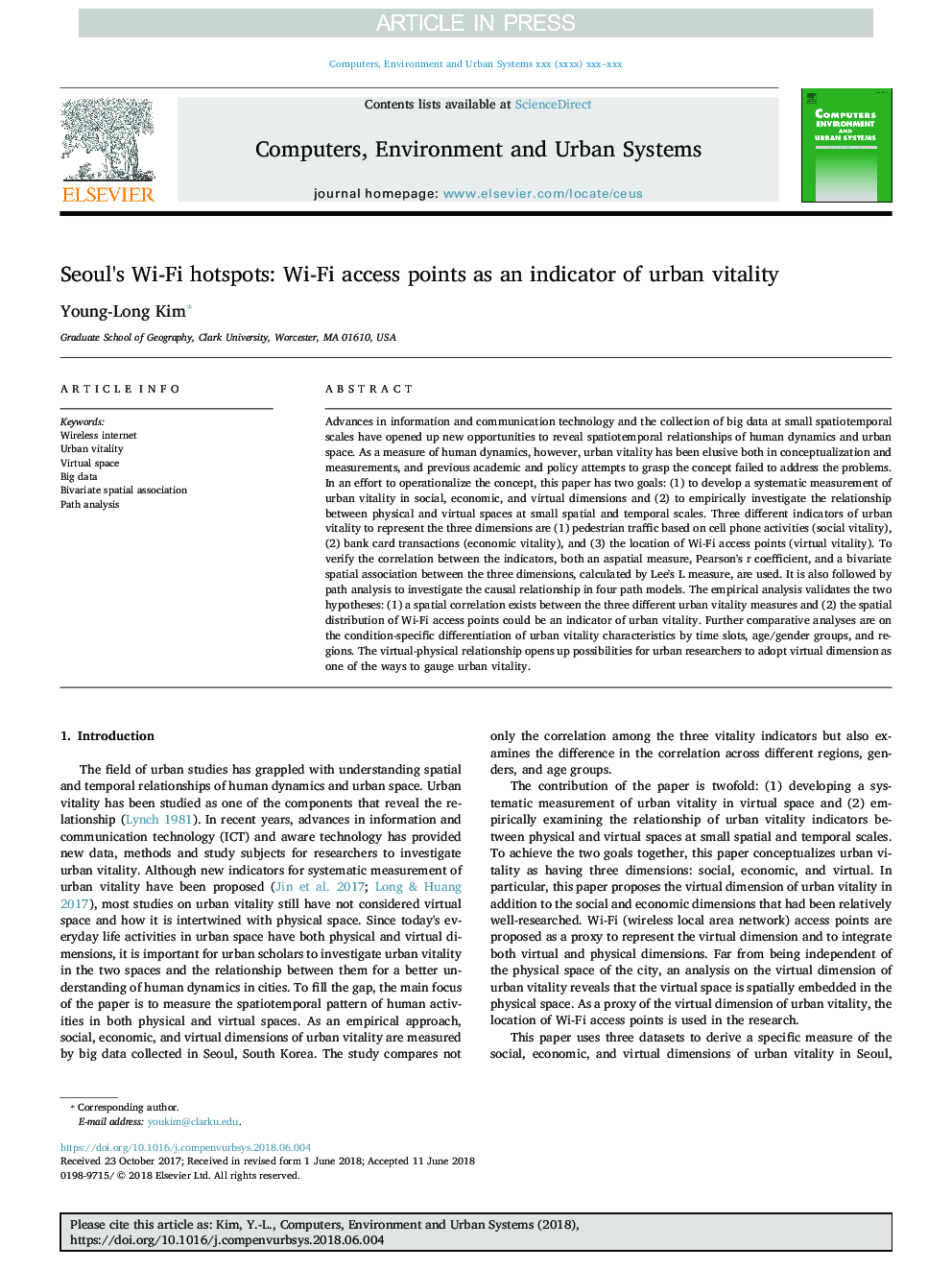| کد مقاله | کد نشریه | سال انتشار | مقاله انگلیسی | نسخه تمام متن |
|---|---|---|---|---|
| 10151440 | 1666125 | 2018 | 12 صفحه PDF | دانلود رایگان |
عنوان انگلیسی مقاله ISI
Seoul's Wi-Fi hotspots: Wi-Fi access points as an indicator of urban vitality
دانلود مقاله + سفارش ترجمه
دانلود مقاله ISI انگلیسی
رایگان برای ایرانیان
کلمات کلیدی
موضوعات مرتبط
مهندسی و علوم پایه
مهندسی کامپیوتر
نرم افزارهای علوم کامپیوتر
پیش نمایش صفحه اول مقاله

چکیده انگلیسی
Advances in information and communication technology and the collection of big data at small spatiotemporal scales have opened up new opportunities to reveal spatiotemporal relationships of human dynamics and urban space. As a measure of human dynamics, however, urban vitality has been elusive both in conceptualization and measurements, and previous academic and policy attempts to grasp the concept failed to address the problems. In an effort to operationalize the concept, this paper has two goals: (1) to develop a systematic measurement of urban vitality in social, economic, and virtual dimensions and (2) to empirically investigate the relationship between physical and virtual spaces at small spatial and temporal scales. Three different indicators of urban vitality to represent the three dimensions are (1) pedestrian traffic based on cell phone activities (social vitality), (2) bank card transactions (economic vitality), and (3) the location of Wi-Fi access points (virtual vitality). To verify the correlation between the indicators, both an aspatial measure, Pearson's r coefficient, and a bivariate spatial association between the three dimensions, calculated by Lee's L measure, are used. It is also followed by path analysis to investigate the causal relationship in four path models. The empirical analysis validates the two hypotheses: (1) a spatial correlation exists between the three different urban vitality measures and (2) the spatial distribution of Wi-Fi access points could be an indicator of urban vitality. Further comparative analyses are on the condition-specific differentiation of urban vitality characteristics by time slots, age/gender groups, and regions. The virtual-physical relationship opens up possibilities for urban researchers to adopt virtual dimension as one of the ways to gauge urban vitality.
ناشر
Database: Elsevier - ScienceDirect (ساینس دایرکت)
Journal: Computers, Environment and Urban Systems - Volume 72, November 2018, Pages 13-24
Journal: Computers, Environment and Urban Systems - Volume 72, November 2018, Pages 13-24
نویسندگان
Young-Long Kim,